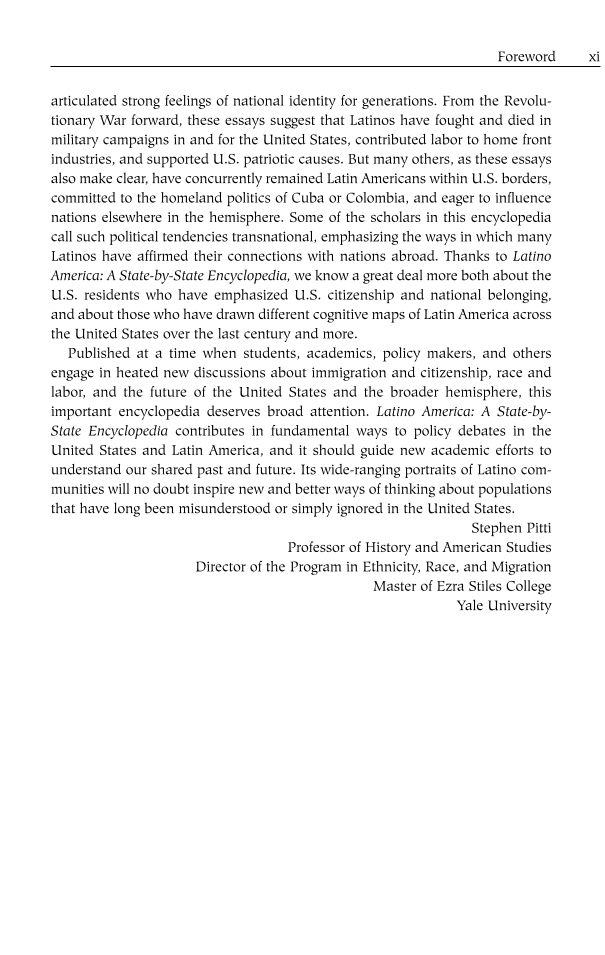articulated strong feelings of national identity for generations. From the Revolu- tionary War forward, these essays suggest that Latinos have fought and died in military campaigns in and for the United States, contributed labor to home front industries, and supported U.S. patriotic causes. But many others, as these essays also make clear, have concurrently remained Latin Americans within U.S. borders, committed to the homeland politics of Cuba or Colombia, and eager to influence nations elsewhere in the hemisphere. Some of the scholars in this encyclopedia call such political tendencies transnational, emphasizing the ways in which many Latinos have affirmed their connections with nations abroad. Thanks to Latino America: A State-by-State Encyclopedia, we know a great deal more both about the U.S. residents who have emphasized U.S. citizenship and national belonging, and about those who have drawn different cognitive maps of Latin America across the United States over the last century and more. Published at a time when students, academics, policy makers, and others engage in heated new discussions about immigration and citizenship, race and labor, and the future of the United States and the broader hemisphere, this important encyclopedia deserves broad attention. Latino America: A State-by- State Encyclopedia contributes in fundamental ways to policy debates in the United States and Latin America, and it should guide new academic efforts to understand our shared past and future. Its wide-ranging portraits of Latino com- munities will no doubt inspire new and better ways of thinking about populations that have long been misunderstood or simply ignored in the United States. Stephen Pitti Professor of History and American Studies Director of the Program in Ethnicity, Race, and Migration Master of Ezra Stiles College Yale University Foreword xi
Document Details My Account Print multiple pages
Print
You have printed 0 times in the last 24 hours.
Your print count will reset on at .
You may print 0 more time(s) before then.
You may print a maximum of 0 pages at a time.






























































































































































































































































































































































































































































































































































































































































































































































































































































































































































































































